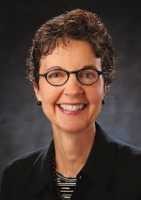12 Feb Young Black MSM Account For Largest Number of New HIV Cases
MedicalResearch.com Interview with:
Laura Kann, PhD
Chief of the School-Based Surveillance Branch (SBSB)
Division of Adolescent and School Health (DASH).
CDC
Medical Research: What is the background for this study?
Dr. Kann: Young persons aged 13–24 years accounted for an estimated 22% of all new diagnoses of human immunodeficiency virus (HIV) infection in the United States in 2014. Most new HIV diagnoses among youths occur among males who have sex with males (MSM). Among all MSM, young black MSM accounted for the largest number of new HIV diagnoses in 2014 (4,398 among blacks, 1,834 among Hispanics, and 1,366 among whites). Although other studies have examined HIV-related risk behaviors among MSM, less is known about MSM aged <18 years.
Medical Research: What are the main findings?
Dr. Kann: Among male students who had sexual contact with males, black students had a significantly lower prevalence than white students of drinking five or more drinks of alcohol in a row; ever using inhalants, heroin, ecstasy, or prescription drugs without a doctor’s prescription; and drinking alcohol or using drugs before last sexual intercourse. Black students also had a significantly lower prevalence than Hispanic students of drinking five or more drinks of alcohol in a row and ever using cocaine, inhalants, methamphetamines, ecstasy, or steroids without a doctor’s prescription. However, among male students who had sexual contact with males, black students had a significantly higher prevalence than white students of ever having had sexual intercourse and using a condom during last sexual intercourse; black students also had a higher prevalence than Hispanic students of ever having sexual intercourse.
Medical Research: What should clinicians and patients take away from your report?
Dr. Kann: The findings in this report do not provide evidence that HIV-related risk behaviors alone drive the higher numbers of HIV diagnoses among young black MSM compared with young Hispanic and white MSM. The differences in HIV diagnoses by race/ethnicity may be explained by the higher rates of HIV and other sexually transmitted infections among black MSM compared with other MSM. Social determinants of health may compound the risk further including higher rates of unemployment and incarceration and lower educational attainment and incomes.
Medical Research: What recommendations do you have for future research as a result of this study?
Dr. Kann: This study recognizes a need for increased access to effective HIV prevention strategies that specifically address young black MSM and MSM of all races/ethnicities. More specifically, further research could help to develop practical information and guidance for youths, their families, educators, and pediatricians or other clinicians who care for young people regarding HIV risk assessment, medications and monitoring, medication adherence, parental consent requirements, payment options, and other potential barriers to new prevention and treatment technologies.
Medical Research: Is there anything else you would like to add?
Dr. Kann: Reducing HIV infection among young MSM, particularly young black MSM, is key to reducing HIV infection in the United States.
Citation:
Weekly / February 12, 2016 / 65(5);106–109
Laura Kann, PhD1; Emily O’Malley Olsen, MSPH1; Steve Kinchen1; Elana Morris, MPH2; Richard J. Wolitski, PhD3
[wysija_form id=”5″]
Laura Kann, PhD (2016). Young Black MSM Account For Largest Number of New HIV Cases
Last Updated on February 12, 2016 by Marie Benz MD FAAD

